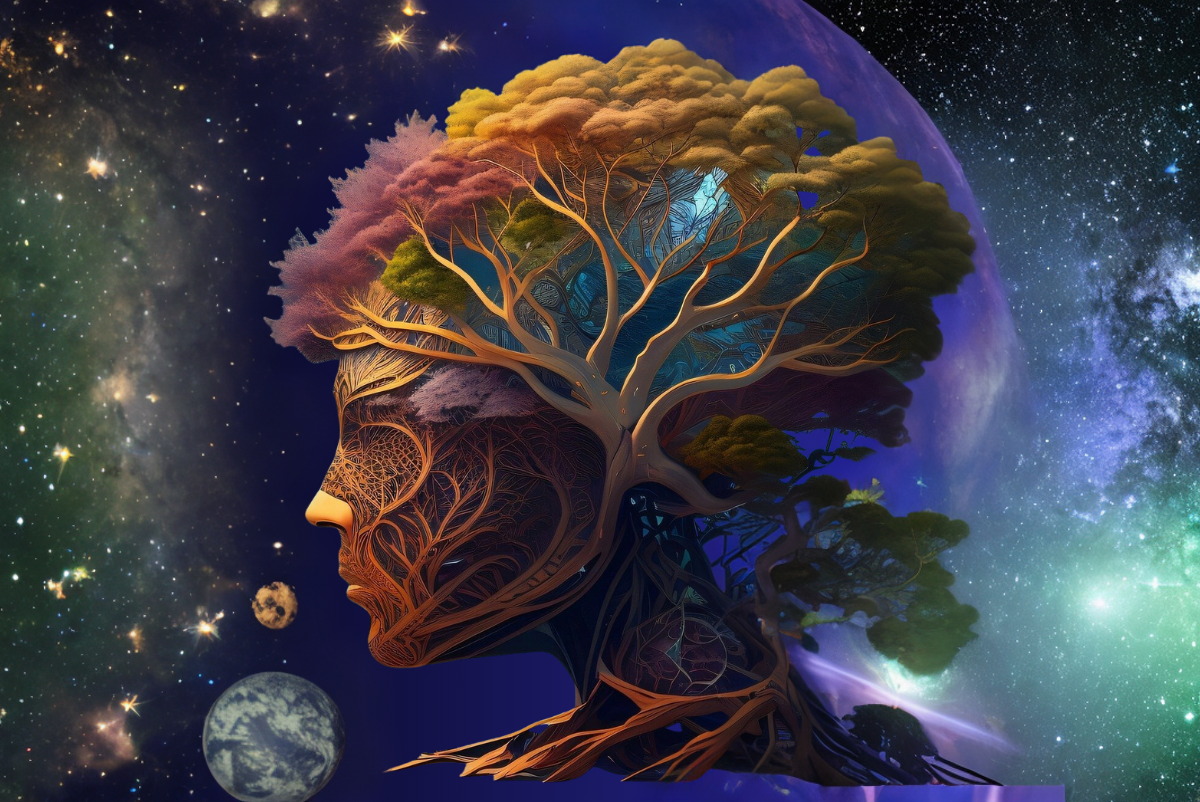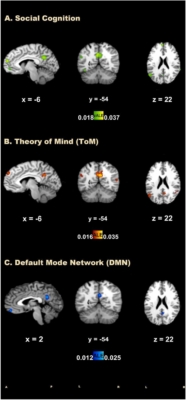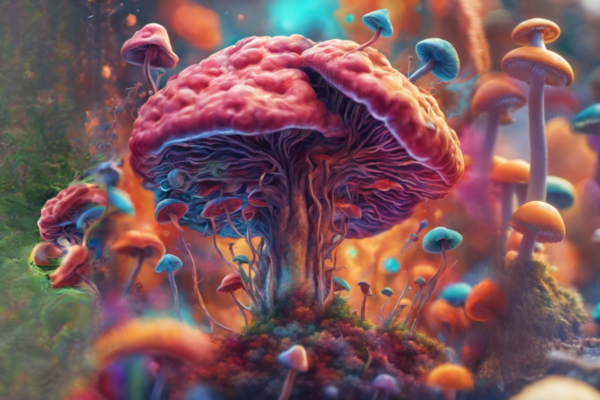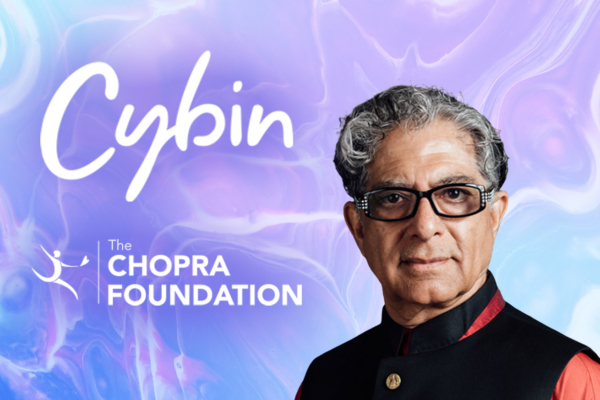
The Default Mode Network, has played a major role in attempting to reveal how psychedelics may work in our brains. The DMN is essentially a group of interconnected brain regions that are associated with introspection. The brain regions are related to self-reflection and self-criticism, and heightened activity of the DMN is linked to mind-wandering, time travel, and our ability to empathize with others (i.e. theory of mind). Studies have have found that the DMN can be particularly overactive in individuals suffering from depression, anxiety, and OCD. On the other hand, the Theory of the Mind (TOM) Network is associated with perspective-taking, our capacity to identify or understand what others think in a specific situation.
Until now, there was no research investigating how these two networks overlap and work together. Moreover, there was no research on how these regions interact under the influence of psychedelics. To unravel the mystery surrounding these networks and how psychedelics affect their neural relationship, a group of scientists decided to perform a quantitative meta-analysis of 88 studies with a total of 2122 participants.
The study, published in Neuroscience & Behavioral Review revealed that the cingulate cortex, more specifically the BA23 and BA31 regions, plays an important role in how these networks overlap and that psychedelics affect how these areas interact with each other. According to the researchers, these substances’ effects on the Theory of Mind and social cognition could unravel some of the mystery behind their therapeutic potential and how these networks relate to our sense of self.
The study’s main highlights are that:
- The Default Mode Network and the Theory of Mind are both related to how we perceive and understand the “self” and others.
-
Psychedelics change our self-perception and modulate social thinking.
-
This is the first study investigating how social cognition and psychedelics overlap.
- Psychedelics and the DMN both affect the same brain regions involved in social cognition, more specifically the cingulate cortex, middle temporal gyrus, and frontal gyrus, which are related to social thinking and our understanding of others.
Social cognition, ToM, and DMN
While performing their research analysis, the researchers noticed that a specific set of brain regions showed up consistently while they were investigating an overlap between the social cognition, ToM and DMN networks. These regions are located in the limbic areas of the cingulate cortex (largest regions of activation which is part of the DMN and which is involved with emotion formation and processing, learning, and memory), as well as the middle temporal gyrus (responsible for visual processing, language comprehension, and memory) and frontal gyrus ( responsible for memory, attention, judgment). The researchers found that psychedelics appear to also affect the ToM and social cognition regions in the same way that the Default Mode Network does. This finding helps to further understand the psychedelic experience which is often characterized by a sense of altered states of consciousness, a profound sense of connectedness, heightened emotional empathy and changes of perceptions of the self. The overlap of these brain regions and psychedelics hints that these substances affect the brain regions responsible for social thinking and emotional processing which may explain why the psychedelic experience induces feelings of profound connectedness and empathy.

This, however, is not the most interesting finding. The research analysis showed that the areas of the brain activated during ToM tasks are almost the same as the ones active during resting states, just like the ones active during social cognition and the DMN tasks. This means that, contrary to what the researchers thought, the DMN doesn’t appear to be playing a specific role in the ToM network. Instead, the network plays a more general role in a broader range of social cognitive tasks like showing empathy, emotion attribution, “false belief”, facial emotion recognition, and so on.
The difference from the researchers’ original hypothesis might be because the DMN is involved in both brain functions (the ToM and the social cognition), which suggests that there may be other networks responsible for their differences. Despite this, the study demonstrated that the social cognition and ToM functions share the cingulate cortex, which is a key part of the Default Mode Network.
Do Psychedelics Deactivate the DMN?
Until now, one of the most discussed theories on how psychedelics work in the brain was that these substances significantly decrease the activity in the Default Mode Network while increasing the connectivity in other brain regions. According to psychiatric doctor and ayahuasca researcher Simon Ruffell, “Brain imaging studies suggest that when psychedelics are absorbed they decrease activity in the default mode network. As a result, the sense of self appears to temporarily shut down, and thus ruminations may decrease. The brain states observed show similarities to deep meditative states, in which increased activity occurs in pathways that do not normally communicate. This process has been compared to defragmenting a computer. Following this, it appears that the default mode network becomes more cohesive. We think this could be one of the reasons levels of anxiety and depression appear to reduce.”
A 2017 study titled Psilocybin for treatment-resistant depression: FMRI-measured brain mechanisms further proposed that psilocybin’s therapeutic potential is due to its ability to ‘reset’ the DMN, turning it off and enabling “a subsequent re-integration and resumption of normal functioning.” However, when comparing previous literature on psychedelics and the DMN, the researchers could not find significant evidence that psychedelics deactivate the DMN, as previously suggested.
Rather than deactivating the DMN, the researchers now believe that psychedelics may actually activate some specific areas of the DMN, especially those related to social cognition and Theory of Mind. Hence, it may be possible that these networks may play a key role in understanding how psychedelics work in the brain and their effect on our social thinking and interactions.
Most importantly, the brain areas where social cognition, Theory of Mind, DMN and psychedelics overlap are the Anterior Cingulate Cortex (ACC) associated with self-perspective (self-evaluation) and the Posterior Cingulate Cortex (PCC) associated with autobiographical memory. The fact that these brain areas are active when we take psychedelics, and when we think about ourselves and about others hints that self-perspective and autobiographical memories are the brain functions that connect these networks.
These findings support the idea that we, as humans, are predisposed to think socially (social cognition) by default, which might be because how we define ourselves is closely related to our autobiographical memories and self-perception. It’s important to mention that psychedelics affect other brain regions that were not looked into for the purposes of this study, and these areas which play a role in our self-awareness, decision-making and planning may have an indirect effect on our self-perception and social thinking.
Therapeutic Potential
The analysis suggests that psychedelics may hold a therapeutic potential for conditions marked by deficits in social cognition and Theory of Mind (ToM), such as such as autism spectrum disorders, bipolar disorder, and neurodegenerative diseases (NDs) like Parkinson’s and Alzheimer’s.
In these conditions, people have challenges to both understand themselves and interact with and understand others, or have difficulty to interpret social cues and empathize with others. An impairment in these functions can affects people’s ability to form meaningful relationships, engage in social interactions, and navigate social situations. Psychedelics’ ability to affect brain areas associated with social cognition and ToM may potentially improve the ability of people with deficits in these brain functions to understand and engage with others.





